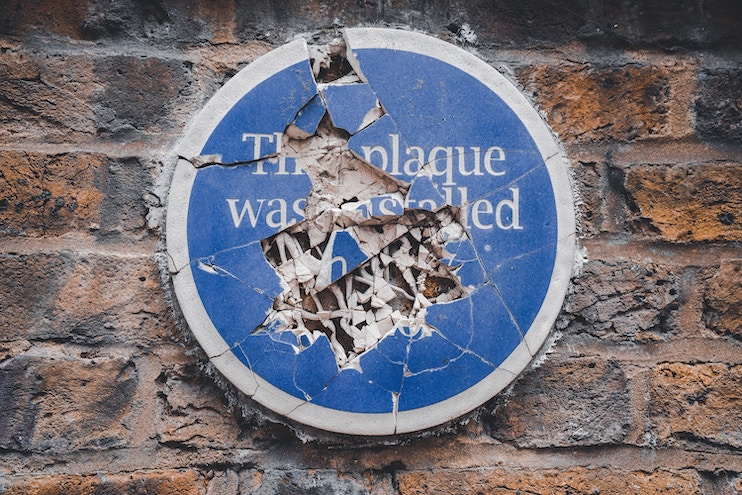The Best Unusual Blue Plaques to Visit across London
Five of the most interesting lesser-known blue plaques that you should know about

It was an unnamed student who designed the blue plaque back in 1938. Luckily their work means everyone can appreciate the feats of great figures of the past, with around 850 plaques in London installed in a public place to commemorate a famous person or event, varying from Charlie Chaplin to Karl Marx. But there are many more mysteries to uncover: here are five lesser-known figures and events commemorated by blue plaques that you should know.
Swami VivekanandaVivekananda is the most influential figure in modern Hinduism. He revitalised the religion within and outside India, raising interfaith awareness and bringing Hinduism to the status of a major world religion in the late 19th century. He contributed to the notion of nationalism in colonial India and as a wandering monk, extensively toured the Indian subcontinent, acquiring first-hand knowledge of conditions. His guru, Ramakrishna, taught him that all religions are true and that service to man was the most effective worship of God and Vivekananda conducted hundreds of public and private lectures and classes in America, England and Europe teaching this, as well as Yoga.
63 St George's Drive, Pimlico, SW1
Dame Millicent Garrett Fawcett, GBEMillicent Garrett Fawcett was president of the National Union of Women's Suffrage Societies between 1890 and 1919. She is considered instrumental in gaining the vote for six million British women over 30-years-old in 1918. As a suffragist, as opposed to a suffragette, she took a moderate line. She focused on improving women's opportunities for higher education, was appointed to lead the Government's commission to South Africa to investigate conditions in the concentration camps created in the wake of the Second Boer War, and she also campaigned successfully for the repeal of the Contagious Diseases Acts, which required that prostitutes be examined for sexually transmitted diseases and imprisoned if positive - where male customers were not.
2 Gower Street, Bloomsbury, WC1
The Cato Street ConspiracyThe Cato Street Conspiracy was an attempt to murder all the British cabinet ministers and Prime Minister Lord Liverpool in 1820. The name comes from the meeting place near Edgware Road in London. The Cato Street Conspiracy is notable due to dissenting public opinions regarding the punishment of the conspirators. While some supported the high-ended attempts to ensure that the Spencean Philanthropists were found guilty, others remained conflicted due to the demand of parliamentary reform.
1a Cato Street, Marylebone, W1
Sir George Frederic Still, KCVOA known English paediatrician, Still is frequently referenced as the ‘father of British paediatrics.’ He is the author of numerous medical textbooks and articles, and first described Still's murmur, Still's rash, and ADHD. Fluent in Greek, Latin, Hebrew and Arabic; his choice of profession was medicine and he devoted his life to paediatrics, writing prolifically about childhood diseases and serving as Secretary of the Children's Clinical Club and particularly helping patients at Great Ormond Street Hospital.
28 Queen Anne Street, Marylebone, W1
Frank Pick Hon. RIBAPick was chief executive officer and vice-chairman of the London Passenger Transport Board from its creation in 1933 until 1940. He commissioned commercial art, graphic design and architecture for the underground, to establish a recognisable brand, including the roundel and typeface still used today. He also expanded the Underground network and bus services considerably, reaching into new areas and stimulating the growth of London's suburbs. Pick also prepared for the government, the transport plan for the mass evacuation of civilians from London at the outbreak of war.
15 Wildwood Road, Golders Green, NW11